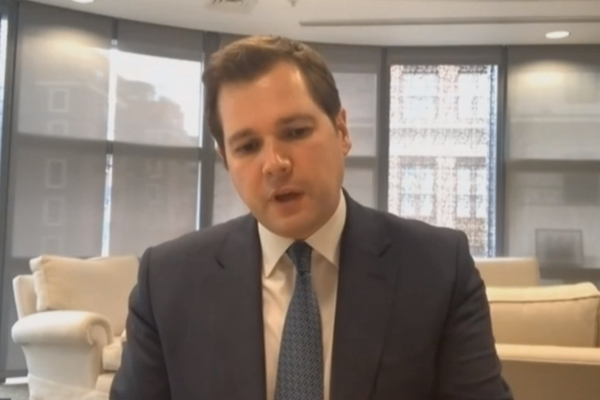You are viewing 1 of your 1 free articles
 Jules Birch
Jules BirchThe government’s temporary fixes on housing will eventually run out. What then?
Sticking plaster measures have put a ban on evictions, rough sleepers in hotels and some funding for cladding removal. But more permanent solutions will be required soon, writes Jules Birch
What then? It’s the question that’s been left hanging in most of the housing elements of the government’s response to coronavirus.
There was a partial answer this week on what happens to thousands of temporarily accommodated rough sleepers as the Ministry of Housing, Communities and Local Government (MHCLG) accelerated funding to make 3,300 housing units available over the next 12 months.
There was an answer of sorts for leaseholders living in unsafe buildings as MHCLG opened registrations for its new £1 billion Building Safety Fund, which extends help to other forms of dangerous cladding as well as aluminium composite material (ACM).
There was also a welcome one for millions of homeowners with mortgages as the Treasury extended the chance to apply for a payment holiday by another three months, and Financial Conduct Authority guidance made clear that banks should not start of continue repossession proceedings until the end of October given the uncertainty faced by customers and government advice on social distancing and self-isolation.
But there is still no answer for millions of social and private renters asking what will happen when the moratorium on evictions ends on 25 June.
With less than a month to go, the government is not short of advice on what to do next. It could heed warnings from campaigners about a wave of homelessness if it fails to act or match the help available to homeowners. Or it could listen to the all-party Housing, Communities and Local Government (HCLG) Committee, which has a Labour chair but a membership with a majority of Conservative MPs. In a report published on Friday, the committee dubbed “toothless” housing secretary Robert Jenrick’s current plan for a pre-action protocol to get landlords to play fair.
Instead it called for emergency legislation before 25 June, to give judges discretion to take the circumstances of coronavirus into account in Section 21 no-fault evictions and Ground 8 rent arrears for the next 12 months. That should be followed by implementing the manifesto commitment to abolish Section 21 completely. The committee’s proposed legislation does not solve all the problems facing tenants but at least it offers some form of exit plan that does not risk triggering a huge rise in homelessness.
Figures released this week show that the number of families in temporary accommodation had reached a 13-year high even before the pandemic struck.
That was a reminder, if any were needed, of the potential scale of the next phase of the crisis if jobs and hours are lost at anything similar to the rate feared by economic forecasters.
Fear of continuing damage to the housing market that is the engine for so much of the economy was what lay behind the sudden decision to reopen it earlier this month and leave people free to meet their estate agents but not their families.
If still uncertain about what will happen to transactions, house prices and housebuilding as a result of the pandemic, ministers do seem focused on doing whatever is needed to get the market going again.
If only the same could be said for the rest of housing. On rough sleeping, there is at least a real chance to avoid missing what the HCLG committee described as a “golden opportunity” to build on the initial success of ‘Everyone In’.
But the government’s plan to build or buy 6,000 housing units, including 3,300 over the next 12 months, looked more impressive when the number of temporarily accommodated rough sleepers was put at 5,400 than it did by Tuesday when the estimate was 15,000.
There are still warnings about funding from local authorities whose finances have taken a battering from the pandemic and it also remains to be seen what will happen to rough sleepers who have no recourse to public funds.
On cladding, publication of the prospectus for the £1bn Building Safety Fund as promised does at least show government commitment to tackling what was probably its top housing priority before coronavirus. However, not even ministers are pretending that the fund will be remotely enough to make all buildings over 18m safe. Already social landlords are warning this will dent their new build plans.
It does not remove the threat of huge bills for leaseholders, there are concerns that a “first come, first served” application process plus a short registration period means those with uncooperative freeholders and managing agents will miss out on help.
It also does nothing for the buildings below 18m that have now been dragged into the cladding scandal.
And an announcement made at the same time was a reminder that the government has still not got ahead of another part of the fire safety crisis. If the risk of fire is sufficiently high to reduce the height threshold for sprinklers in new buildings from 18m to 11m, as will now happen following a consultation, why is it not high enough to justify funding to retrofit them in existing ones of any height?
As with fire safety, so with rough sleeping, protection for renters, families stuck in temporary accommodation, affordable housing supply and all the other issues at the top of ministerial in-trays.
Sooner or later, temporary fixes run out of road and permanent solutions are needed. What then?
Jules Birch, columnist, Inside Housing
Sign up for our daily newsletter
Already have an account? Click here to manage your newsletters













